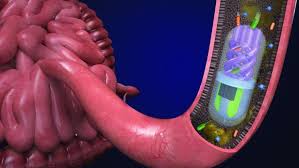
Breaking News
 Black Friday Shopping Guide for the Privacy Geek
Black Friday Shopping Guide for the Privacy Geek
 A lifeline for American farmers: Aid and trade deals on the horizon
A lifeline for American farmers: Aid and trade deals on the horizon
 Decoding Your Teen – #SolutionsWatch
Decoding Your Teen – #SolutionsWatch
 Carrot Fiber Boosts Gut Health and Strengthens Immune Defenses
Carrot Fiber Boosts Gut Health and Strengthens Immune Defenses
Top Tech News
 First totally synthetic human brain model has been realized
First totally synthetic human brain model has been realized
 Mach-23 potato gun to shoot satellites into space
Mach-23 potato gun to shoot satellites into space
 Blue Origin Will Increase New Glenn Thrust 15-25% and Make Rocket Bigger
Blue Origin Will Increase New Glenn Thrust 15-25% and Make Rocket Bigger
 Pennsylvania Bill – 'Jetsons Act' – Aims To Green-Light Flying Cars
Pennsylvania Bill – 'Jetsons Act' – Aims To Green-Light Flying Cars
 New Gel Regrows Dental Enamel–Which Humans Cannot Do–and Could Revolutionize Tooth Care
New Gel Regrows Dental Enamel–Which Humans Cannot Do–and Could Revolutionize Tooth Care
 Researchers want to drop lab grown brains into video games
Researchers want to drop lab grown brains into video games
 Scientists achieve breakthrough in Quantum satellite uplink
Scientists achieve breakthrough in Quantum satellite uplink
 Blue Origin New Glenn 2 Next Launch and How Many Launches in 2026 and 2027
Blue Origin New Glenn 2 Next Launch and How Many Launches in 2026 and 2027
 China's thorium reactor aims to fuse power and parity
China's thorium reactor aims to fuse power and parity
 Ancient way to create penicillin, a medicine from ancient era
Ancient way to create penicillin, a medicine from ancient era
Microbiome-assessing capsule gathers gut bacteria

Non-invasively determining which microbes make up a person's "gut microbiome," however, can be difficult – which is why a new 3D-printed capsule was developed.
Created by a team at Massachusetts' Tufts University, the capsule is designed to be orally ingested, collecting various species of bacteria as it passes through the gastrointestinal tract. Once it's excreted in the feces, the capsule can be retrieved and its contents analyzed.
It incorporates two interior chambers that are separated by a semi-permeable membrane. One of these chambers contains helical (helix-shaped) microfluidic channels, in which bacteria gathered from different stages of the GI tract are stored. The other contains calcium salt which produces an osmotic flow across the membrane, pulling bacteria from outside of the capsule into the channels in the first chamber.



